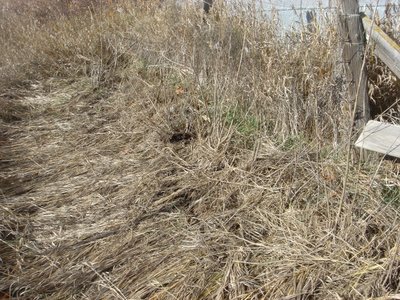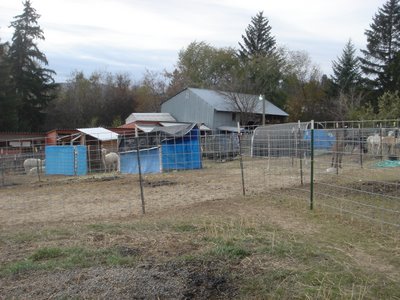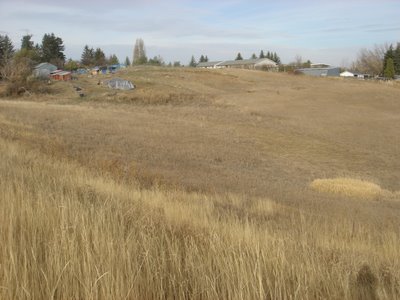Deborah and Suvia noticed some excellent poplars along the edge of someone’s property as they drove around Moscow on their normal errands. These poplars were clearly healthy, and they kept their leave on longer into the fall than most of the other cottonwoods in the area. We wanted to plant some cottonwoods in the pasture area since they grow quickly, have large and numerous leaves, and coppice well. To make sure we weren’t creating problems for the alpacas by doing this I looked into the nutrition and toxicity of poplar leaves. A combination of my own investigations and consulting with both a local dendrology PhD. student and a veterinary diagnostic toxicologist indicated that poplar leaves should be fine for the alpacas to eat. In addition we gathered some fresh poplar leaves and gave them to the alpacas to see if they were interested (even if the leaves are a great source of food it won’t help the alpacas diets if they eat them).
Poplar trees are well known for vegetative reproduction, and this batch was no different. They had been planted along the edge of someone’s property, and they were sending shoots that were popping up as saplings out of the nearby ditch. Since the ditch was right next to the road access couldn’t have been better. The property turned out to be owned by a professor I knew, who was happy to let me take some of his prolific saplings. We walked his property together to make sure I knew where would be alright for me to take saplings from.

This is a good time of year for transplanting trees. It’s basically the end of autumn and the deciduous trees have dropped their leaves and gone into dormancy for the winter. But it’s still above freezing and the ground moist from late autumn rain. The soil is easy to dig, and the trees are dormant so transplanting them is much less of a shock.


Not knowing exactly how many saplings I would need I dug up most of those available to me, all of which were in this ditch beside the edge of the road. It had been raining a few days before, and was lightly sprinkling on the day I went out to dig. The soil in the ditch was supersaturated, which made digging a pulling roots up much easier. I didn’t take any of the soil with me, but instead dug up the saplings and as much of the roots as I could reasonably get up intact. I placed the trees in a large trash bag and drove them back to the ranch.
Since we don’t know exactly where we will be planting the pasture trees just yet, we needed to put the saplings in the ground someplace out of the way to get them through the winter. I planted all of the saplings close to the northern boarder of the pasture, in an area where the alpacas won’t have access to them. They are all close together in order to minimize the disturbance this location and to make it easier to go back and dig them up later on when we are ready to put them in the pasture.



The grass makes the saplings hard to see here when they don’t have their leaves. But there are about 20-25 saplings here (some are smaller than others). This will probably be more than we need, but having extra gives us a little margin for error and sapling mortality.
Since many of these saplings are so small we will place exclosures around them for a few years once they are planted in the pasture. This will allow them to grow larger and build a stronger root system. Once they are large enough to withstand browsing by the alpacas we’ll take down the exclosures.

















